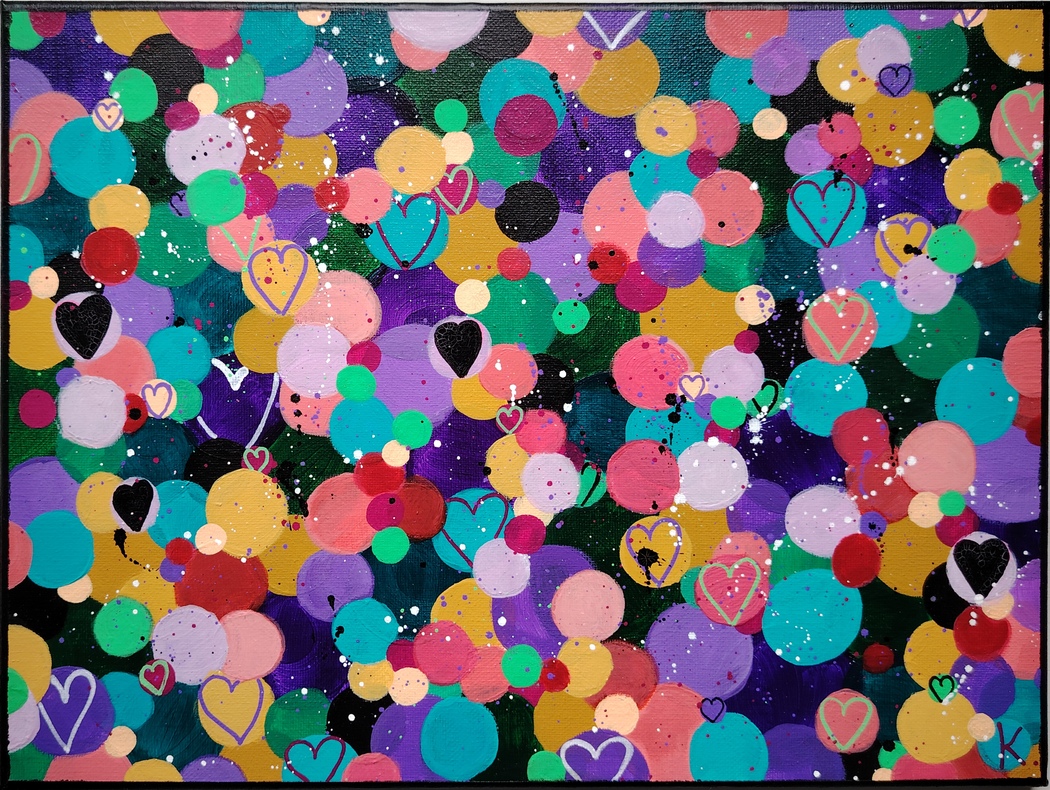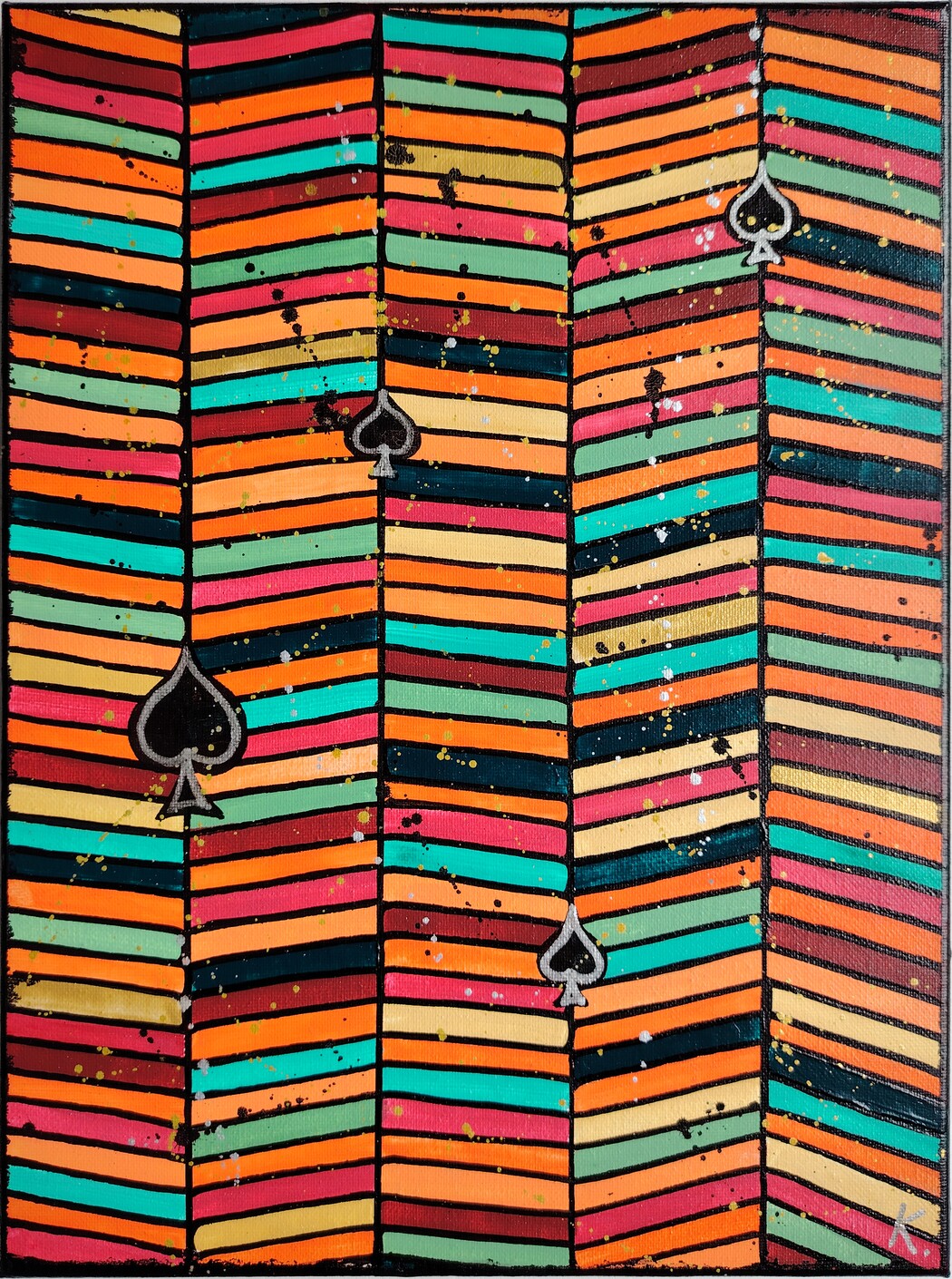Ophélie SIMONET aka KOA
Your universe blends humor, pop culture, and ’90s nostalgia. What part of your childhood or personal history has most influenced this joyful aesthetic?
I grew up in the 1990s, surrounded by anime, flashy tracksuits, and rolls of bubblegum. It was a time that was both innocent and bold. I think my style comes from that—a childhood spent between VHS tapes, glitter pens, and dance music. When I paint, it’s a bit like I’m still decorating my school notebooks with the energy of my 8-year-old self.
You describe painting as your “dose of freedom” and your antidote to the monotony of daily life. What emotions do you most often channel when creating?
Anger, without hesitation. Mixed with a genuine instinct of pride and courage. But also a sense of mischief and lightness. I paint to engage in a dialogue with the viewer, to offer a playful visual wink. There’s sometimes melancholy, sometimes gentle rebellion, but always a desire to play.

Does your synesthesia influence your artistic choices—especially your use of bright colors and contrasts?
Yes, I think so. I have ordinal-linguistic synesthesia, which means that letters, numbers, and even musical notes have very specific personalities for me. Colors also have a distinct nature. So when I choose one, it’s not just for aesthetic reasons—it’s because of what it tells me, what it represents. This makes my contrasts and color palettes highly instinctive but also deeply symbolic.
The TECKY collection features dachshunds in both playful and symbolic situations. Why this choice? What do these dogs represent for you?
The dachshund is the perfect anti-hero: stubborn, unintentionally funny with its improbable body shape, and incredibly endearing. It’s an outsider that couldn’t care less about what others think and just does its own thing. For me, it represents unapologetic uniqueness, self-deprecating humor, and a kind of clumsy determination. And visually, it’s super funky, isn’t it? It’s become my ideal mascot.

Your work often plays with language, humor, and visual puns. Do you see yourself more as a visual artist or a storyteller?
Both—but with a paintbrush! I love it when someone smiles or pauses, trying to “understand” a piece. If it sparks a reaction, a connection, or a question, then I’ve succeeded. I also put a lot of time, care, and heart into writing the descriptions of my paintings. Each text acts as a kind of “solution,” always in reference to the world of games.
In your series “Jeu de Couleurs,” you subvert the classic associations between colors and objects. What inspired this approach? And how do you choose your objects?
I wanted to play with the way we associate certain colors with certain things—and especially to break those automatic reflexes. I choose objects or subjects that are easily recognizable, so I can twist them into visual symbols. But it’s also important that the French wordplay can be used and understood. It’s both a visual joke and a way of saying: “things are sometimes different from what we imagine.”

You split your time between a “traditional” job and your artistic practice. Do these two worlds complement each other or conflict?
They rub against each other more than they merge, but that tension fuels my creativity. My job imposes structure—a certain language, behavior, and way of operating. Painting is my breath of fresh air, my “playground,” my kingdom. One feeds the other: the contrast makes art essential.


Leave a Reply